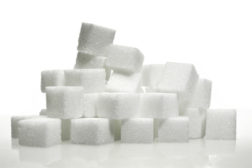Wayne Labs
Wayne Labs has more than 30 years of editorial experience in industrial automation. He served as senior technical editor for I&CS/Control Solutions magazine for 18 years where he covered software, control system hardware and sensors/transmitters. Labs ran his own consulting business and contributed feature articles to Electronic Design, Control, Control Design, Industrial Networking and Food Engineering magazines. Before joining Food Engineering, he served as a senior technical editor for Omega Engineering Inc. Labs also worked in wireless systems and served as a field engineer for GE’s Mobile Communications Division and as a systems engineer for Bucks County Emergency Services. In addition to writing technical feature articles, Wayne covers FE’s Engineering R&D section.
Senior Contributing Technical Editor
ARTICLES
American Sugar Alliance sent every Capitol Hill office a personalized replica of a 1940s sugar rationing coupon.
Read More
1.5 trillion calories reduced in US foods
The Healthy Weight Commitment Foundation announced it has exceeded its calorie reduction goal.
July 1, 2013
TECH FLASH
Methods to curb energy rate increases
Many processors have already switched out inefficient lighting and invested in high-efficiency motors, and some have tried demand control while others have instituted real-time purchasing of energy.
June 26, 2013
Food Safety
Minimizing risk from raw materials
The ingredients you use reflect the quality of your product, so keep close tabs on your suppliers
June 8, 2013
Sustainability
Energy management: crunching the numbers
Reducing energy usage is an ongoing practice, requiring education and continuing efforts by everyone in the organization.
May 13, 2013
Food Safety
Inline monitoring aids in food safety and quality
What you don’t measure could kill your brand.
May 13, 2013
Tech Update: Meat & Poultry Processing
Employing energy savings as a competitive edge
May 13, 2013
Plant of the Year
Plant of the Year 2013: Chobani
Chobani's brand-new Twin Falls facility continues to evolve while keeping up with the American public's insatiable demand for Greek yogurt.
April 9, 2013
Tech Update - Pumps
Look before you leap into pump selection
While there may be more than one pump solution for a specific application, it pays to do some homework first to find the most efficient solution.
April 9, 2013
Elevate your expertise in food engineering with unparalleled insights and connections.
Get the latest industry updates tailored your way.
JOIN TODAY!Copyright ©2024. All Rights Reserved BNP Media.
Design, CMS, Hosting & Web Development :: ePublishing










